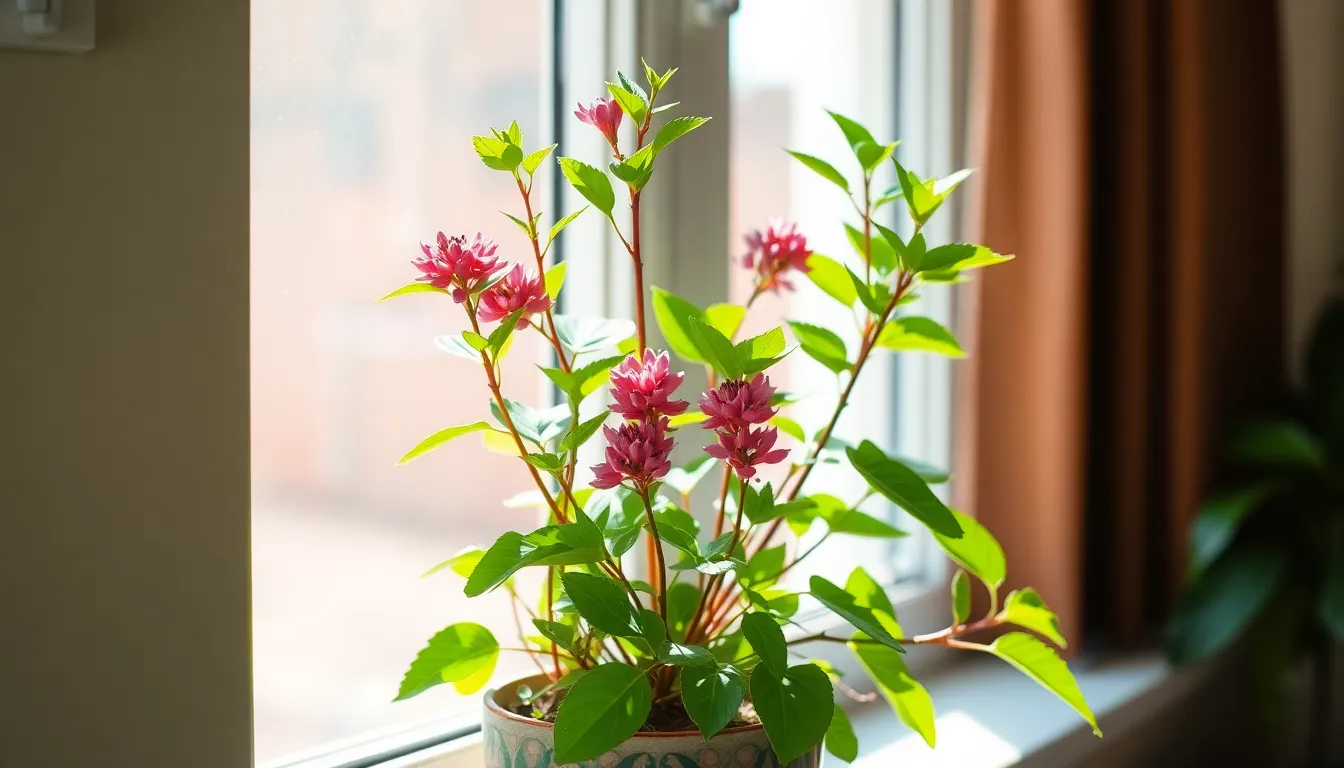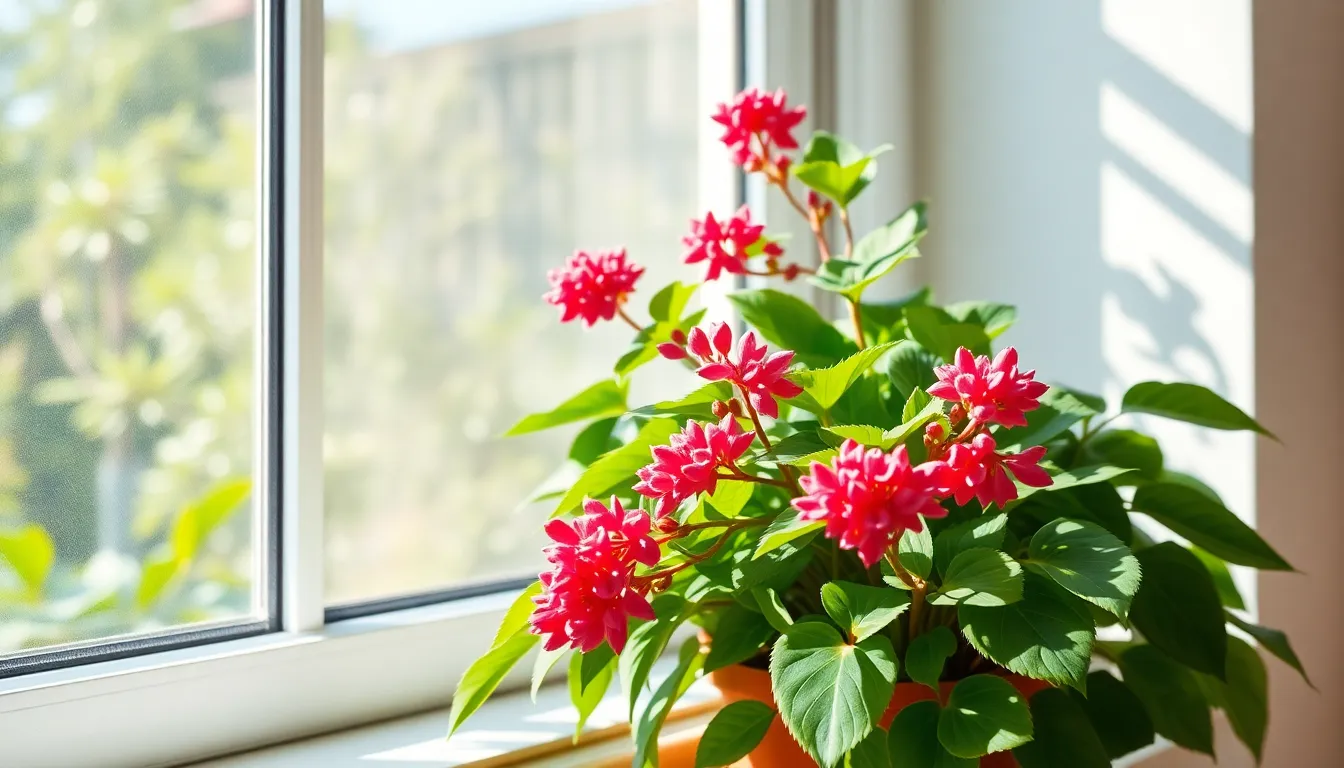If you’re looking to add a splash of color to your indoor jungle, the Calandiva plant is your go-to green buddy. With its vibrant blooms and easy-going nature, it’s like the life of the party that never runs out of energy. But don’t let its cheerful appearance fool you; this little diva has some specific needs that, if met, will keep it thriving and blooming like a superstar.
Caring for a Calandiva isn’t rocket science, but it does come with its own set of quirks. From finding the perfect sunlit spot to mastering the art of watering without drowning it, this plant will reward your efforts with a stunning display of flowers. So, roll up those sleeves and get ready to impress not just your plant, but your friends too. After all, who wouldn’t want a plant that’s as fabulous as they are?
Calandiva Plant Care
Calandiva plants are noted for their colorful blooms and low maintenance needs, making them ideal houseplants. Understanding their origins and characteristics helps in providing optimal care.
Origins and Characteristics
Calandiva originated from the Kalanchoe genus, specifically Kalanchoe blossfeldiana, native to Madagascar. These plants display thick, succulent leaves and produce clusters of vibrant flowers that bloom in various colors including pink, red, and white. Compact growth habits characterize them, typically reaching heights of 6 to 12 inches. Resistance to drought enables the Calandiva to thrive even with infrequent watering. This adaptability finds them well-suited for indoor environments, where they prefer bright, indirect sunlight. Notably, these plants enjoy warm temperatures and demonstrate a typical lifespan of 2 to 5 years with proper care.
Common Varieties
Several varieties of Calandiva exist, each offering unique beauty and flower colors. The ‘Calandiva Pink’ showcases soft pink blooms that create a romantic ambiance. Bright red flowers define the ‘Calandiva Red,’ bringing bold energy to indoor spaces. ‘Calandiva Yellow’ features cheerful yellow blossoms, adding a sunny touch to any setting. In contrast, the ‘Calandiva White’ boasts pristine white flowers for a classic look. Varieties demonstrate varying flower sizes and petal shapes, broadening options for plant enthusiasts. All come with the same basic care requirements, making them easy to incorporate into any plant collection.
Essential Care Tips for Calandiva

Caring for a Calandiva plant involves specific considerations that enhance its health and blooming. Addressing its needs directly leads to vibrant plants that thrive indoors.
Light Requirements
Calandiva prefers bright, indirect sunlight. It thrives in environments receiving at least six hours of light daily. Placing the plant near an east or west-facing window benefits its growth. Direct sunlight may scorch its leaves, so indirect exposure is ideal. Observing the plant for signs of insufficient light, such as leggy growth or fewer blooms, prompts repositioning for optimal light.
Soil and Fertilization
Well-draining soil is crucial for Calandiva. A cactus or succulent mix works well, allowing excess moisture to escape. Fertilization supports blooming; using a balanced liquid fertilizer once a month during the growing season enhances its health. Avoid over-fertilizing, as this can lead to salt build-up and damage the plant. Maintaining a consistent feeding schedule promotes a vibrant display of flowers.
Watering Practices
Watering requires attention to the soil moisture level. Allow the top inch of soil to dry between watering sessions. Overwatering leads to root rot, while underwatering can cause droopy leaves and fewer blooms. Water thoroughly, ensuring drainage holes prevent standing water. Adjusting watering frequency based on the season aids in maintaining plant health.
Repotting and Pruning
Repotting and pruning contribute significantly to the health of a Calandiva plant. These tasks ensure the plant has enough space to grow and can thrive in its environment.
When to Repot
Repotting typically occurs every 1 to 2 years. Signs that indicate it’s time include roots emerging from drainage holes or limited growth. An appropriate time to repot falls during early spring, just before the growing season begins. Select a pot that’s one size larger than the current container, using well-draining soil, such as a cactus mix. Ensure the new pot has sufficient drainage holes to prevent root rot. This process will refresh the plant’s nutrient supply and encourage vibrant blooms.
Pruning Techniques
Pruning enhances the overall appearance and health of the Calandiva. Start by removing any dead or wilted flowers to promote new growth. Use clean, sharp scissors to make precise cuts just above a leaf node. This method prevents potential disease and fosters branching. Trim back leggy stems to encourage a bushier growth habit. Regular pruning occurs in late winter or early spring, leading to a profusion of vibrant flowers when the growing season starts. This maintenance practice keeps the plant looking lively and full.
Common Pests and Diseases
Calandiva plants can face several pests and diseases. Identifying these issues early helps in maintaining plant health.
Identifying Issues
Common pests include mealybugs, spider mites, and aphids. Mealybugs appear as white, cottony masses on leaves and stems. Spider mites create tiny webs and cause yellowing of leaves. Aphids cluster on new growth, leading to distorted leaves and stunted growth. Fungal diseases like root rot often result from overwatering, seen in yellowing leaves and a mushy stem base. Recognizing these symptoms allows for timely intervention, enhancing the chances of saving the plant.
Prevention and Treatment
Preventing pests starts with proper care. Regularly inspecting the plant for telltale signs helps catch infestations early. Keeping Calandiva plants clean reduces pest attraction, as dust can harbor pests. Neem oil acts as an effective treatment option if pests appear. Spraying the affected areas suffocates infestations. For fungal problems, ensuring well-draining soil and avoiding excessive watering prevents root rot. Removing infected areas promptly stops the spread of disease, while maintaining healthy growing conditions supports resilient plants.
Conclusion
Caring for a Calandiva plant can be a rewarding experience that brings vibrant color to any indoor space. With the right attention to light, water, and soil conditions, this resilient succulent can thrive and produce stunning blooms. Regular maintenance such as repotting and pruning will not only enhance its appearance but also contribute to its overall health. By staying vigilant against pests and diseases, plant owners can ensure their Calandiva remains a beautiful centerpiece for years to come. Investing time in its care promises a flourishing display that will captivate anyone who visits.





